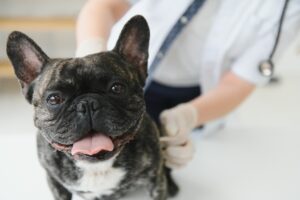Welcoming a new puppy into your family is an incredibly exciting adventure! Preparation is the key to a smooth transition for you and your furry friend. This comprehensive guide will outline the must-have supplies and the know-how to ensure your puppy thrives in their new home.
Home Sweet Home: Setting Up Your Space
- Crate: Crates aren’t cruel! They provide puppies with a secure, den-like space, aid significantly in house training, and make travel safer. Choose a size your puppy can comfortably stand up and turn around in.
- Bedding: Cozy blankets or dog beds create comfy sleep spaces both inside the crate and around the house.
- Puppy Gates & Playpens: These offer safe confinement for unsupervised periods and keep your puppy limited to designated areas.
- Puppy-Proofing: Scan your home for dangers like electrical cords, toxic houseplants, and cleaning products that must be out of reach.
Fueling Your Furry Friend: Food, Treats, & Supplies
- Puppy Food: Invest in a premium, age-appropriate kibble for puppy growth and energy needs. A consistent feeding schedule is crucial.
- Treats: Opt for healthy, small-sized treats perfect for training sessions, rewards, and building a strong bond.
- Food and Water Bowls: Pick sturdy, size-appropriate bowls your puppy can easily access. Stainless steel is a good, hygienic choice.
- Supplements (if needed): Talk to your veterinarian about whether your pup would benefit from supplements for specific health needs.
Out and About: Walks, Playtime, & Safety
- Collar and Leash: Start with a lightweight but secure collar and leash combo. Choose comfortable materials for your pup.
- Harness: A harness might be better than a collar for some breeds or if your puppy pulls.
- ID Tags and Microchip: These are essential lifelines! A microchip and an ID tag with your contact details will help reunite you with your puppy if they get lost.
- Car Restraint: Keep your puppy safe during car rides with a harness that clips into a seatbelt or a secure travel crate.
Puppy Playtime: Fun and Enrichment
- Variety of Toys:
- Chew toys: Help with teething and fight boredom.
- Plush toys: Offer cuddle-time comfort.
- Puzzle toys: Provide essential mental stimulation.
- Safe outdoor space: A fenced yard or supervised play in a safe area allows for off-leash zoomies and exploration.
Hygiene and Healthcare
- Grooming Supplies: Stock up on brushes and combs matching your breed’s coat type, gentle dog shampoo, and nail clippers.
- Puppy Pads: Great for initial housetraining stages.
- Poo Bags: Practice responsible dog ownership.
- Veterinarian: Find a vet you trust for vaccinations, parasite control, checkups, and emergencies.
Beyond The Basics: The Extra TLC
- Training Resources: Invest in puppy training books or consider enrolling in a class to learn positive reinforcement methods for a well-behaved pup.
- Socialization: Early and safe socialization with various people, other dogs, and different sights and sounds will shape a confident adult dog.
- Pet Insurance: Unexpected vet bills happen; pet insurance helps cover the costs.
Puppyhood is a wonderful, but whirlwind, time. Preparing with the right supplies and knowledge leads to a happier, healthier, and well-adjusted pup. Remember, trusted resources like your veterinarian, dog trainers, and reputable websites are always there to offer further guidance.







